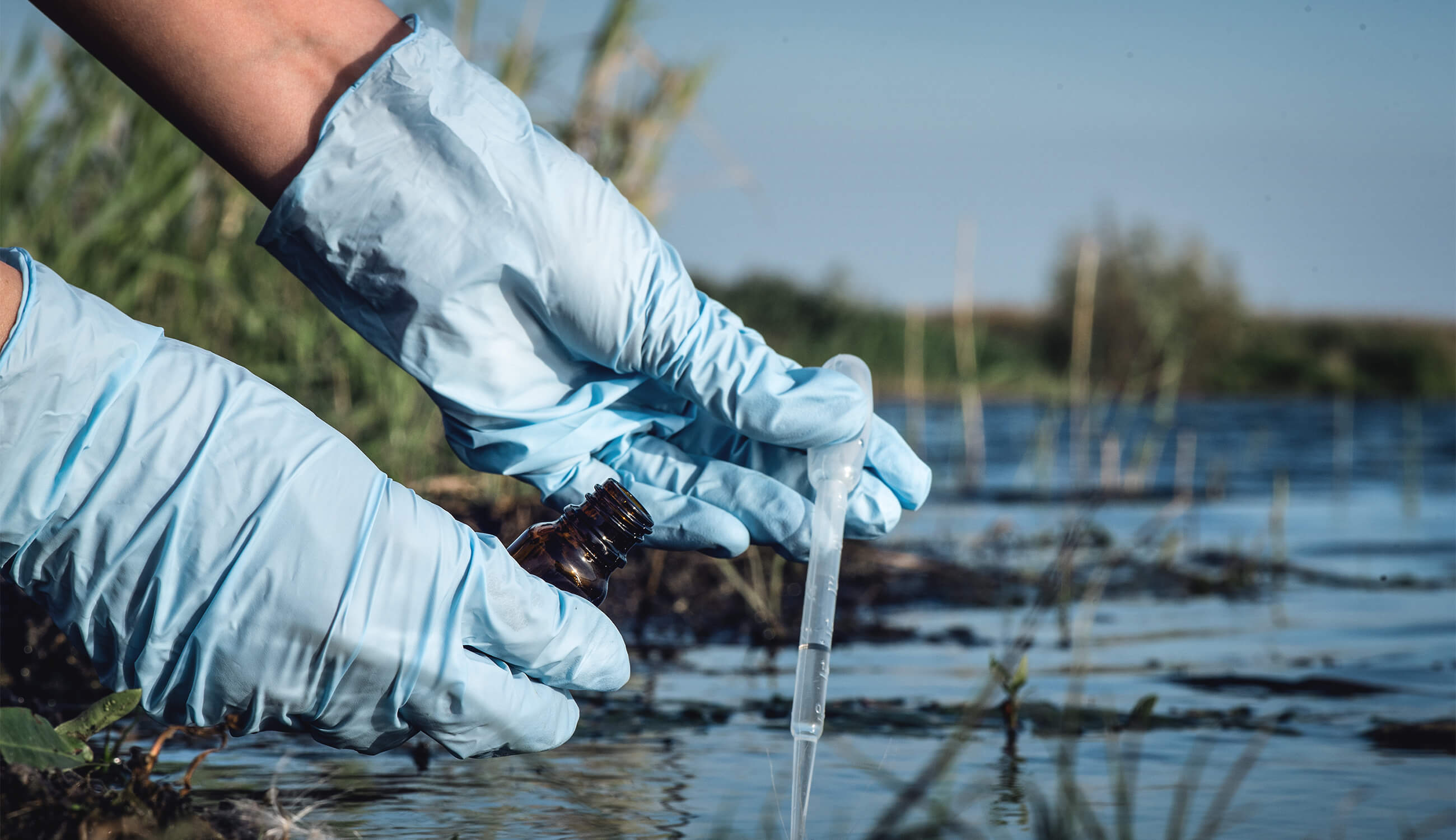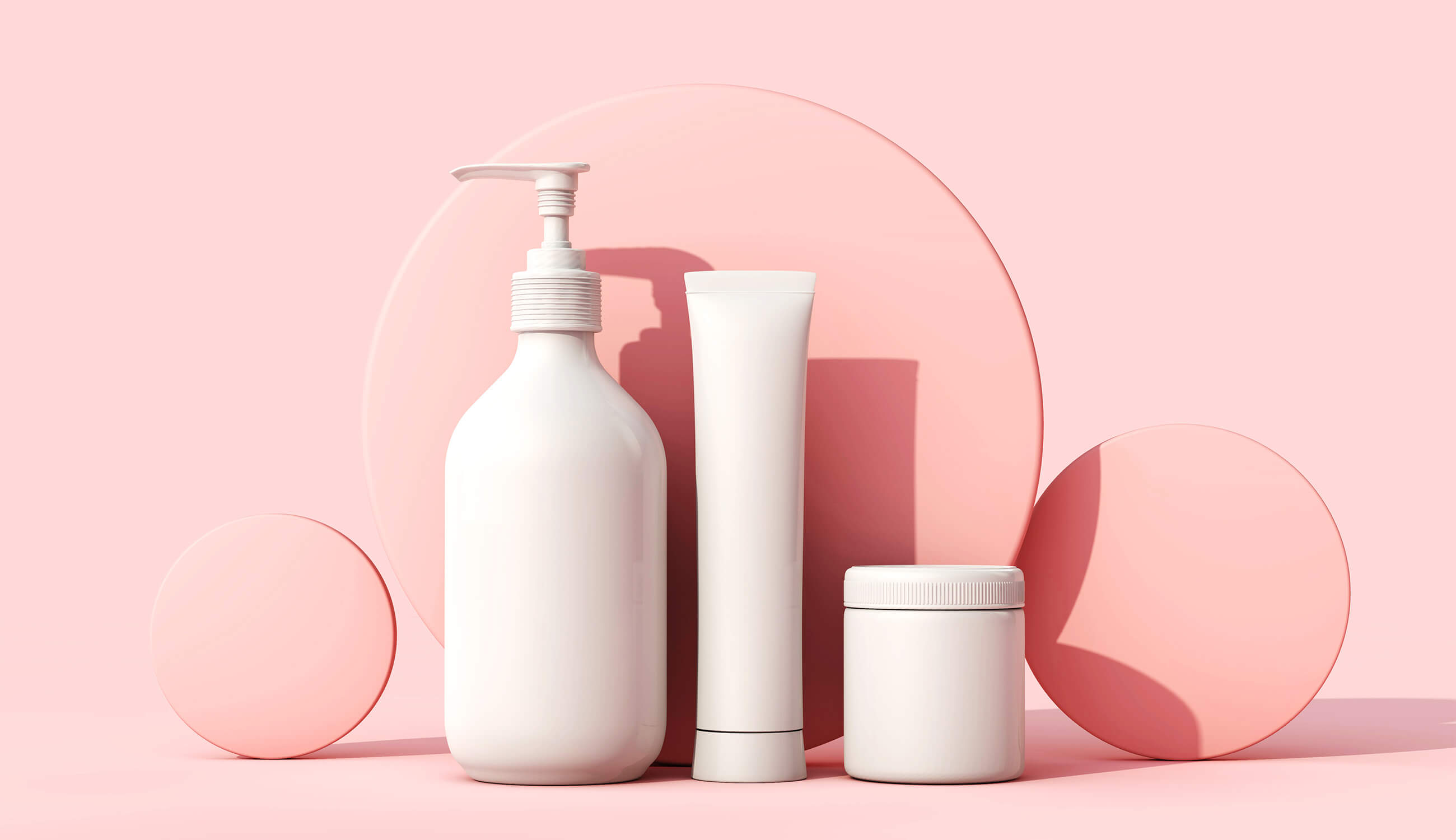How It Relates to Personal Care Products, the Environment, and Your Health
Posted on March 24, 2024 Written by: 100% PURE®

The process of bioaccumulation goes beyond just carbon build-up in our atmosphere – the human body is also susceptible to this dangerous process. Personal care products that we use every day, such as skincare, shower gels, and hair care can contribute to this process, and trigger harmful effects to our bodies and the environment.
So, what is bioaccumulation in beauty products? How do your products contribute to this process? The effects of bioaccumulation are often difficult to reverse unless we stop polluting ourselves and the planet. Don’t stress just yet – we’ll break it all down for you – plus give you some clean beauty alternatives!
In a general sense, what is bioaccumulation? It’s the accumulation of harmful pollutants in living organisms at a rate greater than that at which the substance is eliminated.
Essentially, this means that a toxic chemical gradually builds up in a living being (such as animals or humans) or environment. The living being or environment is unable to get rid of this chemical as quickly as it builds up, leading to a dangerous accumulation of these compounds.
Animals, humans, plants, and natural habitats usually have some sort of filter for toxic ingredients. For us, it’s our kidneys, liver, and lungs that filter and absorb the good stuff, while releasing the junk from what we eat, drink, or breathe.
However, certain “persistent” ingredients can resist degradation and are more difficult for our bodies to expel. What’s more, the effects of these can multiply if we continuously expose ourselves to the same harmful substances.
So, how does bioaccumulation happen in the body or the environment? One prime example occurs when we pollute the ocean with persistent compounds like plastics and pesticides. The chemicals from these materials can leach into the ocean, making sea animals, plants, and marine organisms especially vulnerable to constant exposure and bioaccumulation. As a result, food that we consume from the sea can, in turn, contribute to bioaccumulation in our bodies.
Industrial dumping is another culprit in pollution of our precious marine ecosystems – and is one of the leading causes of mercury bioaccumulation in fish. Certain types of fish are prone to mercury bioaccumulation and are regularly consumed by humans. When we’re exposed to mercury, it’s difficult to remove it from the body and can affect our central nervous system.
The CDC has released multiple studies on our exposure to environmental chemicals, including one on environmental pollutants that analyzed samples from 2,500 participants. These samples showed traces of “mercury, lead, uranium, dioxins, PCBs, pesticides, herbicides, phytoestrogens, and cotinine (a by-product of nicotine).”
PRO TIP: Curious about which environmental chemicals you’re being exposed to? The CDC publishes regular national reports listing each of the most commonly bioaccumulative compounds.
Generally, one of the most persistent forms of environmental bioaccumulation we see is in the form of carbon emissions. Since we’re producing carbon at a rate beyond what plants and other organisms can consume, the carbon persists. It builds up, trapping heat in the atmosphere and contributing to the staggering effects of climate change.

How does bioaccumulation affect the beauty industry specifically? When we use skincare, body care, or hair care products, we expose our bodies to either good or bad chemicals. Our skin can absorb these chemicals, especially if we wear them for an extended period. So, we should make sure we’re using the right ones.
While some of these “bad” chemicals may be fine in low doses, the truth is that we’re not just exposed to one dose. We’re continuously exposing our bodies to these products with long term, repeated, and regular use. The effects are compounded when we use multiple products with the same disruptive chemical. So, what is this bioaccumulation doing to our bodies?
We need to actively avoid these ingredients because they build up easily, disrupt our endocrine systems, prove to be carcinogenic, and are shown to be toxic to our organ systems. These include talc, coal tar, parabens, and phthalates.
[For a more in-depth read on what toxic ingredients to avoid, check out A Beginner’s Guide to Non Toxic Makeup.]
Some of the ingredients that bioaccumulate aren’t always disruptive to our body; sometimes we’re affecting the environment with the personal care products we use.
So, what is bioaccumulation in the environment and how does it work?
When we rinse products off in the sink or in the shower, they reach large bodies of water. While many ingredients break down through sunlight or bacteria, not all of them degrade naturally – or quickly. Despite complex water filtering systems, the most persistent ingredients can still bioaccumulate in ocean environments. Some examples are silicones, microplastics, and triclosan.
Does this mean we need to throw out all our skincare products and cosmetics or live au naturel for the remainder of our lives for fear of bioaccumulation of harmful ingredients in our bodies or environment?
While it’s perfectly normal to have some general concerns, the more you educate yourself on common products with toxic chemicals that can bioaccumulate, the more you can make an informed decision on what you’ll use or avoid. The great news is there are plenty of alternative products to cut out your guesswork!
It doesn’t take much pondering to conclude that many conventional skin and hair products, cosmetics – even common household items – have a whole host of chemicals and toxic ingredients that can bioaccumulate and potentially cause harm to you and your health.
The great news is we’re here to help you identify and avoid some of the most common culprits, while offering natural and safe alternatives to them so you can still safely enjoy your fave products every day!
#1: Talc
Talc is used widely in many cosmetics for its ability to improve the textural feel of a product and to absorb moisture. So, it’s a seemingly perfect mineral addition to powder formulas – everything from foundation to blush to eyeshadows – are often crafted with talc.
But talc has its dark underbelly. Talc is a material made of magnesium, silicon, and oxygen and may also have asbestos fibers. It’s the asbestos fibers that are the scary part, which can pose health risks, such as respiratory toxicity, as well as cancer.
Naturally, we’ve opted out of using talc in our natural makeup powder formulas and opted for rice powder, which has an ultra-soft texture and effective absorbency. We use it in our Fruit Pigmented® Powder Foundation collection, which is a cult fave thanks to its poreless finish. Rice powder is also the main component in our powder blushes and eyeshadows, making them beautifully pigmented and ultra-blendable.
#2: Coal Tar Dues
This pigment gives beauty products, from mascara and lipsticks to hair dye, an inky black hue and is a byproduct of burning coal. This petroleum-derived culprit can be found as p-phenylenediamine, “CI”+number, “FD&C”+number, or “D&C”+number.
Whatever the number, coal tar is widely recognized as a carcinogen. It causes severe allergic reactions and is linked to cancer. It’s also contaminated with heavy metal, which is toxic to the brain and causes skin irritation and rashes. Coal tar is also toxic to fish and wildlife.
We definitely want to avoid putting coal tar dyes near our mouths or eyes! That’s why we avoid it in our natural, length-conditioning mascaras, which nourish with organic green tea and vitamin E.
We’re picky about what we put on our mouths, especially considering how much lipstick we inadvertently eat. That’s why we stick to natural lipsticks, free of questionable ingredients like coal tar.
#3: Parabens
No doubt you’ve heard about those sneaky little preservatives called parabens. The purpose of parabens is to prevent bacteria from forming in products. Any personal care product that has an ingredient ending in –paraben should be on your list of products to avoid.
Parabens can be absorbed through the skin: shampoo, conditioner, lotion, hair care, deodorant, and skin care. Studies show that parabens can cause endocrine disruption, developmental and reproductive toxicity, and various cancers, including and most notably, breast cancer.
The good news about parabens is that they can easily be avoided, and replaced with safer alternatives. We have plenty of paraben-free options for shampoos and conditioners for every hair type, texture, color, and length on our list. You can enjoy the same goodness and safety with our body washes and gels to make your shower experience relaxing and luxurious.
#4: Phthalates
Phthalates are a group of chemicals most commonly used to make plastic more flexible and harder to break. They also act as a binding agent or a solvent. You can find these chemical culprits under DEP, DBP, DEHP, and fragrance.
Phthalates are commonly found in nail polish, perfume, and hairspray. They can be an endocrine-disrupting chemical, altering hormonal balance and potentially causing reproductive, developmental, and other health issues.
In sticking with our natural and clean mantra for our skincare and makeup products, our nail polish formulas are no exception. Our 20-free nail polishes are free of the top 20 toxic ingredients found in many nail polishes. A plus? They’re cruelty-free, too.
One of the best ways to avoid harmful ingredients is to read your labels. Look out for harmful preservatives, artificial fragrances, talc, mineral oil, phthalates, silicones, and triclosan. Physical scrubs with microplastics are another big culprit – opt for a finely ground sugar or salt scrub instead!
However, reading an ingredient list can be tiring and lengthy – not to mention, harmful ingredients can hide under aliases. Mineral oil, for instance, can be called paraffin, petroleum, or petrolatum. It can be time-consuming to learn every name and alias under the sun.
A way to simplify this process is to buy from brands that are committed to choosing safe, all-natural alternatives to mainstream cosmetic ingredients. Find a brand whose values align with yours, so you can rest assured that you’re using safe, quality ingredients.
An alternative is to research ingredients online through reputable sources. You can get a breakdown of ingredient health ratings, and pinpoint any ingredients that should be avoided (like parabens).
Another way to avoid harmful ingredients is by choosing products that are USDA Organic. This makes it less likely that synthetic contaminants will affect your health and the health of the environment. Artificial colors in makeup, for example, can contain contaminants like lead.
Look specifically for the USDA logo. This means a brand is actually certified organic and not just making vague claims on their packaging.
A good hair day is a blessing, but a great hair day can be a complete game changer. Split ends, dry, distressed strands, zero volume, and overall lackluster color are all red flags that your hair isn’t having a great day (or week, month, year). If that’s not enough of a hair-ache, dry, itchy or irritated skin can be plaguing you, too. The problem most likely lies in your shower.
Harsh, stripping, or toxin-filled conventional hair and body care products typically contain parabens, and they should be the last thing you’re putting on your distressed locks and delicate dermis. Nourish them with healing butters and oils for lasting hydration, from head to toe.
The good news about parabens is that they can easily be avoided, and replaced with safer alternatives. Check out our top paraben-free options, and say goodbye hat hair, sayonara sad messy buns, and adios irritated skin!
Kelp and Mint Volumizing Shampoo
If you’re seeking volume and a refreshing sensation, this volumizing shampoo is an excellent option. Kelp and mint extracts combine to invigorate the scalp, while the formula adds body and fullness to your hair, making it ideal for fine or thin hair types.
Kelp and Mint Conditioner
This invigorating conditioner gives your lovely locks extra fullness, body and shine — three major hair care solutions you’ve been looking for! The gentle zip from peppermint will help to stimulate your scalp, while kelp works on thickening your hair. Who knew that kelp could also add that perfect amount of shine?
Vanilla Bean Shower Gel
Refresh your skin and relax your senses with this luxurious shower gel! Natural ingredients such as aloe, rose hydrosol, red algae, and green tea help to cleanse deep while locking in essential moisture. Coconut oil surfactants provide gentle cleansing without damage or drying out – perfect for any skin type. And don’t forget the delightful vanilla scent that will leave you feeling relaxed after each use!
Eucalyptus Shower Gel
This richly foaming shower gel lifts away dirt, oil, and impurities, while rehydrating thirsty skin with aloe and rose hydrosol. Infusions of red algae and green tea help to lock in essential moisture and gently tone the skin. This sulfate-free eucalyptus body soap is free of harsh detergents, and uses gentle coconut oil surfactants to maintain skin’s delicate lipid barrier. This nourishing shower gel is infused with scents of fresh, invigorating peppermint and eucalyptus.
Now that we’ve answered the bioaccumulation question, we hope you’ll take the time to look through your cosmetics, skin, and hair routine. Pinpoint any products that contain bioaccumulative ingredients, and replace them with natural, plant-based alternatives. Be sure to read and analyze the ingredients list – it’s the most surefire way to get the safest product possible!
How Can Bioaccumulation Affect Human Health?
Some of those adverse effects include but are not limited to disruption of the nervous and endocrine systems, reproductive and developmental problems, immune system suppression, and are shown to be toxic to our organ systems, as well as cause cancer.
How Does Bioaccumulation Impact Environmental Health?
Bioaccumulation of these toxins in the top levels of food chains can often reach dangerous levels that can affect the survival and reproduction of populations. Take our marine ecosystems. It’s one of the leading causes of mercury bioaccumulation in fish. Certain types of fish are prone to mercury bioaccumulation and are regularly consumed by humans. When we’re exposed to mercury, it’s difficult to remove it from the body and can affect our central nervous system, as well as cause other health problems.
What Measures Can Consumers Take to Minimize Exposure to Bioaccumulative Substances?
Replace your conventional hair and body care formulas that contain harmful ingredients with safer alternatives. Make sure products are USDA organic. A way to simplify this process is to buy from brands that are committed to choosing safe, all-natural alternatives to mainstream cosmetic ingredients. Find a brand whose values align with yours, so you can rest assured that you’re using safe, quality ingredients.
What Are the Long-Term Effects of Bioaccumulation on Wildlife and Ecosystems?
When contaminants accumulate long-term within organisms in wildlife and ecosystems, especially at the top of the food chain, it can lead to imbalances in predator-prey relationships. This disruption can result in population declines, altered species interactions, and reduced biodiversity.
Can Bioaccumulative Substances Be Removed from the Body?
Because of the substances persistence and ability to bioaccumulate, once exposure levels are sufficient to cause adverse effects in humans, domestic animals, or wildlife, their impacts are not easily reversed. It’s important to pinpoint any products that contain bioaccumulative ingredients, and replace them with natural, plant-based alternatives for your safety and the health of the planet.














